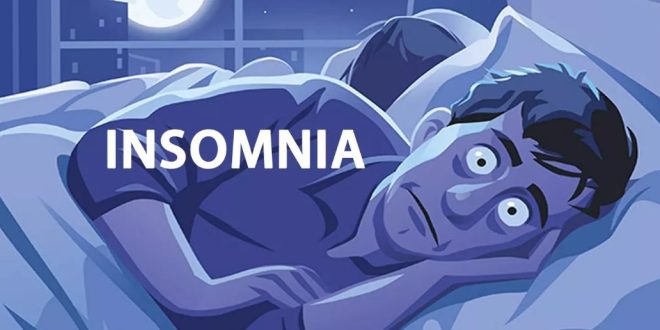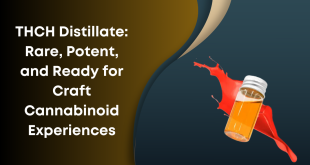Insomnia, characterized by difficulty falling or staying asleep, can significantly impact an individual’s quality of life. Various treatments exist, with medications playing a crucial role in management. Two widely prescribed medications for insomnia are Zolpidem and Zopiclone. While both serve a similar purpose, they have distinct characteristics, mechanisms of action, benefits, side effects, and other considerations. This article provides an in-depth comparison of Zolpidem and Zopiclone to help patients and healthcare providers make informed decisions regarding insomnia treatment.
Understanding Insomnia
Definition and Types of Insomnia
Insomnia is a sleep disorder that can manifest as:
- Difficulty falling asleep (initial insomnia)
- Difficulty staying asleep (maintenance insomnia)
- Waking up too early and being unable to return to sleep
- Non-restorative sleep, leading to daytime fatigue and dysfunction
Insomnia can be classified into two primary types:
- Acute Insomnia: This type is short-term and usually results from stress, changes in environment, or other temporary factors. It may last for days to weeks.
- Chronic Insomnia: This long-term condition persists for months or longer, often linked to underlying medical or psychiatric conditions, substance use, or poor sleep habits.
Causes of Insomnia
Several factors can contribute to insomnia, including:
- Psychological Factors: Anxiety, depression, and stress can disrupt sleep patterns.
- Medical Conditions: Chronic pain, respiratory disorders, and hormonal changes can interfere with sleep.
- Substance Use: Caffeine, nicotine, alcohol, and certain medications may affect sleep quality.
- Lifestyle Factors: Irregular sleep schedules, excessive screen time before bed, and a lack of physical activity can also contribute.
Overview of Zolpidem and Zopiclone
Both Zolpidem and Zopiclone are medications used to treat insomnia, but they belong to different classes and have distinct characteristics.
Zolpidem
- Mechanism of Action:
Zolpidem is classified as a non-benzodiazepine hypnotic agent. It works primarily by binding to the gamma-aminobutyric acid (GABA) receptors in the brain. GABA is a neurotransmitter that promotes relaxation and sleep. By enhancing GABAergic activity, Zolpidem induces sleep and reduces the time it takes to fall asleep.
- Indications:
Zolpidem is indicated for the short-term management of insomnia, specifically for individuals who have difficulty falling asleep.
- Dosage Forms:
Zolpidem is available in several formulations, including:
- Immediate-release tablets (typically 5 mg or 10 mg)
- Extended-release tablets (often 6.25 mg or 12.5 mg), designed to help maintain sleep throughout the night
- Sublingual tablets and oral sprays for faster onset of action
Zopiclone
- Mechanism of Action:
Zopiclone is also classified as a non-benzodiazepine hypnotic, but it has a slightly different structure. Like Zolpidem, Zopiclone acts on GABA receptors in the brain, enhancing the effects of GABA to promote sleep. It may also have a mild muscle relaxant and anxiolytic effect.
- Indications:
Zopiclone is indicated for the short-term treatment of insomnia, particularly for individuals with both difficulty falling asleep and maintaining sleep.
- Dosage Forms:
Zopiclone is typically available in 3.75 mg and 7.5 mg tablets, taken orally before bedtime.
Efficacy: Zolpidem vs. Zopiclone
Onset of Action
Both Zolpidem and Zopiclone have relatively rapid onset times, but Zolpidem may act slightly faster.
- Zolpidem: Onset of action is usually within 15 to 30 minutes, making it suitable for individuals who struggle with falling asleep.
- Zopiclone: Onset is also around 30 minutes, though some users may report slower action, depending on individual metabolism and other factors.
Duration of Action
- Zolpidem: The half-life of Zolpidem is approximately 2 to 3 hours for immediate-release formulations, which means it can help initiate sleep but may not be as effective for those with maintenance insomnia.
- Zopiclone: Zopiclone has a longer half-life of about 5 hours, allowing it to help maintain sleep throughout the night and potentially be more suitable for those who wake up during the night.
Overall Effectiveness
Studies have shown both medications to be effective in improving sleep quality, reducing sleep latency (time taken to fall asleep), and decreasing nighttime awakenings. However, individual responses can vary, making it essential for healthcare providers to tailor treatments to each patient.
Side Effects
While Zolpidem and Zopiclone are generally well-tolerated, they can cause side effects. Understanding these potential effects is crucial for informed decision-making.
Common Side Effects
Zolpidem:
- Drowsiness: Although the primary goal is to induce sleep, residual drowsiness can occur the next day.
- Dizziness: Some users may experience lightheadedness or dizziness.
- Headache: A common side effect reported by some users.
- Gastrointestinal Disturbances: Nausea and diarrhea can occur in some patients.
Zopiclone:
- Drowsiness: Similar to Zolpidem, users may experience next-day drowsiness.
- Dry Mouth: Zopiclone is associated with a dry mouth sensation, which can be uncomfortable.
- Metallic Taste: A distinct metallic taste is a commonly reported side effect of Zopiclone.
- Dizziness: Similar to Zolpidem, users may feel dizzy or lightheaded.
Serious Side Effects
Both medications can lead to more severe side effects, although they are rare. These may include:
- Allergic Reactions: Rash, itching, or swelling can occur, necessitating immediate medical attention.
- Abnormal Behavior: Some individuals may experience complex sleep-related behaviors, such as sleepwalking or engaging in activities while not fully awake (e.g., eating, driving).
- Cognitive Impairment: Long-term use of either medication may result in memory problems or difficulty concentrating.
Dependence and Withdrawal
Zolpidem and Zopiclone carry a risk of dependence, particularly with prolonged use. Patients using these medications for extended periods may experience withdrawal symptoms, including rebound insomnia, anxiety, and agitation when discontinuing treatment.
Comparing the Risks
Zolpidem
- Risk of Dependence: Higher risk for those using it regularly or in higher doses, particularly in individuals with a history of substance abuse.
- Next-Day Impairment: Users may experience cognitive and motor impairment the following day, affecting tasks such as driving.
- Sleep-Related Behaviors: Increased reports of complex sleep behaviors, including sleepwalking and engaging in activities without awareness.
Zopiclone
- Risk of Dependence: Also poses a risk of dependence and withdrawal, though some studies suggest it may have a slightly lower potential than Zolpidem.
- Next-Day Impairment: Similar to Zolpidem, Zopiclone can cause next-day drowsiness and cognitive impairment.
- Taste Disturbances: The unique metallic taste can be bothersome for some users, potentially affecting adherence to the medication.
Recommendations for Use
When considering Zolpidem or Zopiclone for the treatment of insomnia, several factors should be taken into account:
1. Duration of Use
Both medications are typically recommended for short-term use, usually not exceeding 2 to 4 weeks. Long-term use should be approached with caution, with regular evaluations of treatment necessity.
2. Individual Patient Characteristics
- Age: Older adults may be more susceptible to side effects, and alternative non-pharmacological approaches should be considered first.
- Medical History: Individuals with a history of substance abuse, respiratory disorders, or significant psychiatric conditions may require closer monitoring and alternative treatments.
- Comorbid Conditions: Patients with chronic pain or other underlying medical issues may benefit from adjunctive therapies in conjunction with either medication.
3. Non-Pharmacological Alternatives
Before initiating treatment with Zolpidem or Zopiclone, consider non-pharmacological interventions for insomnia:
- Cognitive Behavioral Therapy for Insomnia (CBT-I): A structured program that helps patients develop better sleep habits and address the thoughts and behaviors contributing to insomnia.
- Sleep Hygiene Education: Establishing a consistent sleep schedule, creating a comfortable sleep environment, and reducing stimulants such as caffeine can help improve sleep quality.
- Relaxation Techniques: Mindfulness, meditation, and breathing exercises can aid in reducing anxiety and promoting relaxation before bedtime.
Conclusion
Both Zolpidem and Zopiclone serve as valuable treatment options for managing insomnia, each with its own unique characteristics, benefits, and side effects. While Zolpidem may offer faster onset and targeted assistance for falling asleep, Zopiclone provides a longer duration of action that may help maintain sleep.
The choice between Zolpidem and Zopiclone should be guided by individual patient needs, preferences, and potential risks. Both medications carry a risk of dependence and side effects, emphasizing the importance of regular monitoring and collaboration with healthcare providers to ensure effective and safe treatment.
Ultimately, addressing the underlying causes of insomnia and exploring non-pharmacological interventions can lead to sustainable improvement in sleep quality and overall well-being. As always, patients should engage in open discussions
 Diverse Perspectives: Insights & Stories Exploring Ideas, Sharing Knowledge
Diverse Perspectives: Insights & Stories Exploring Ideas, Sharing Knowledge





